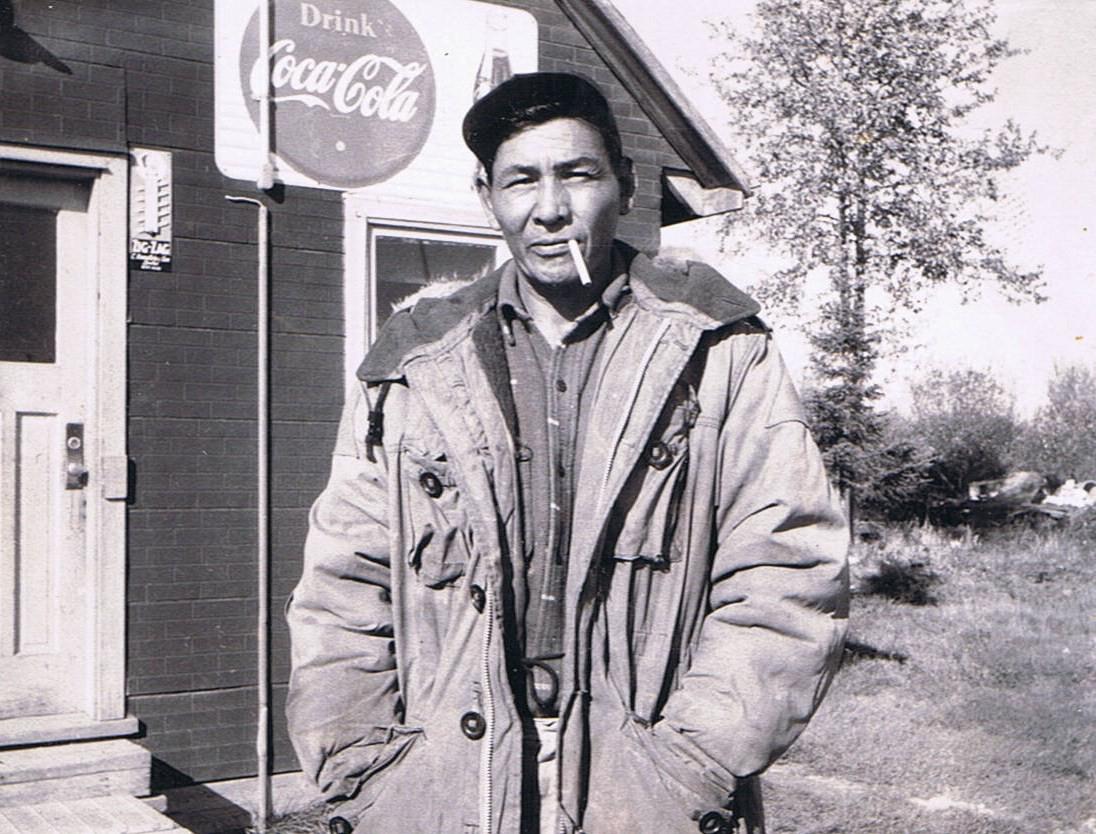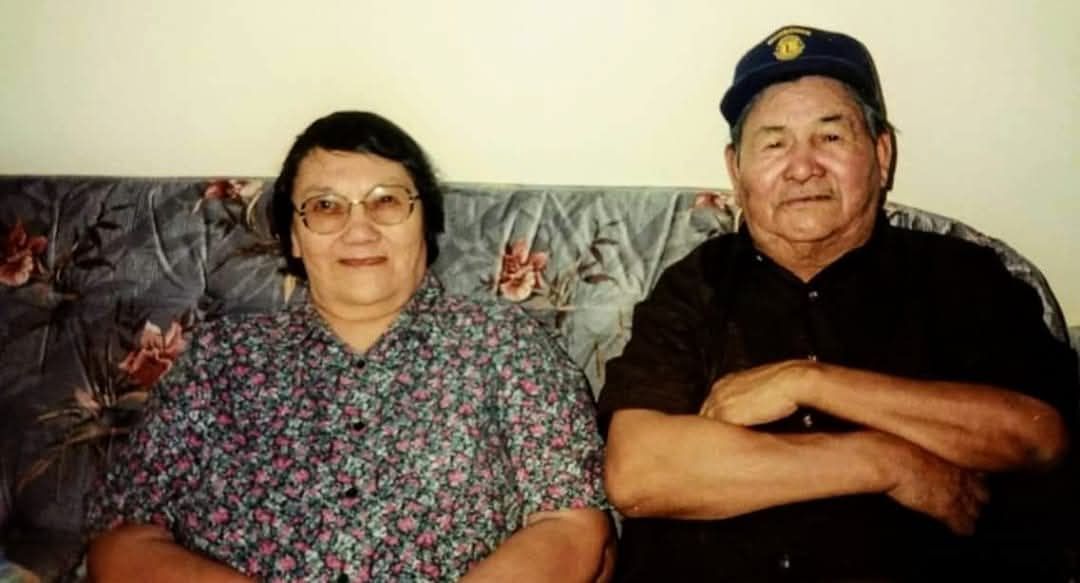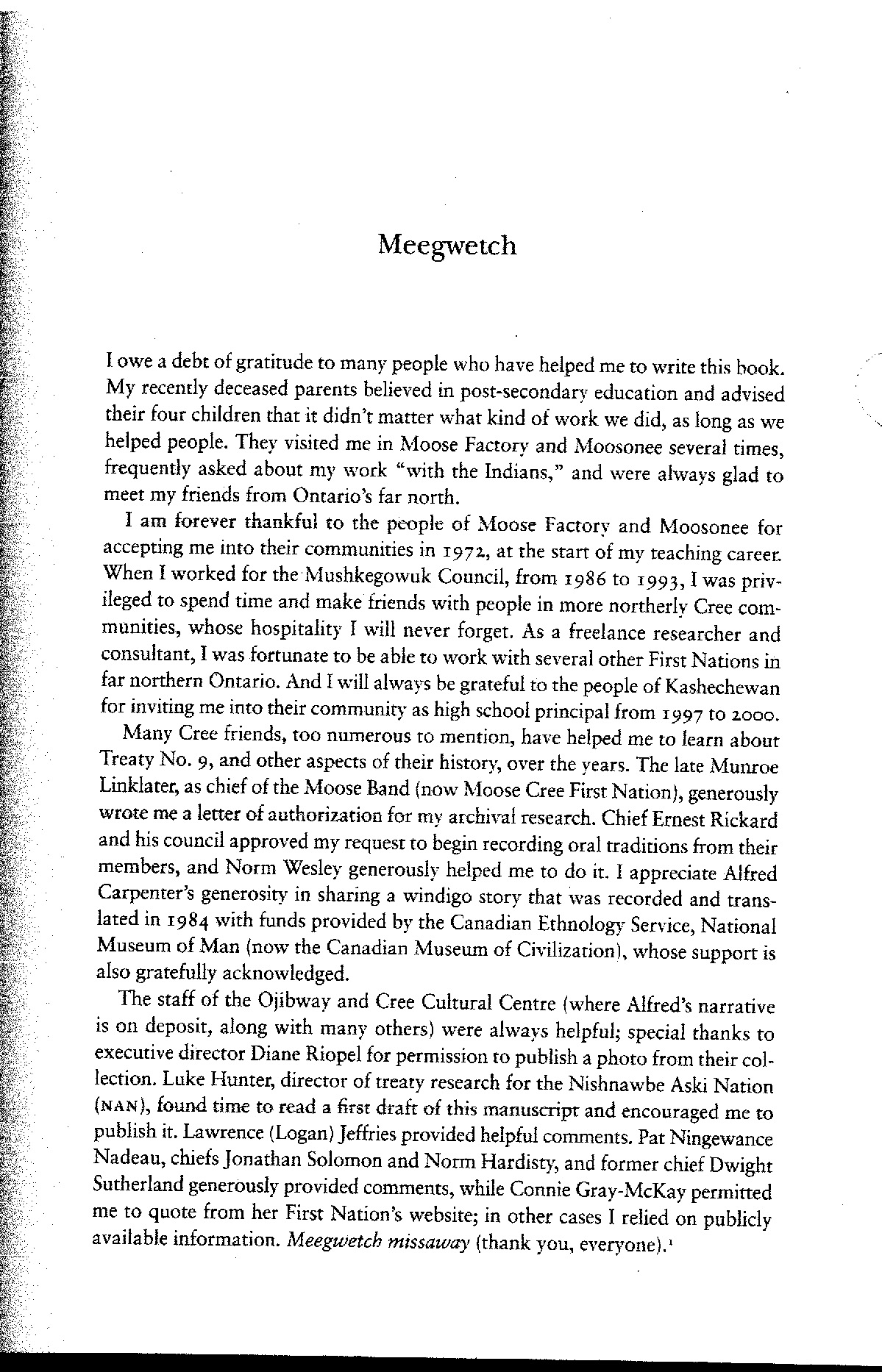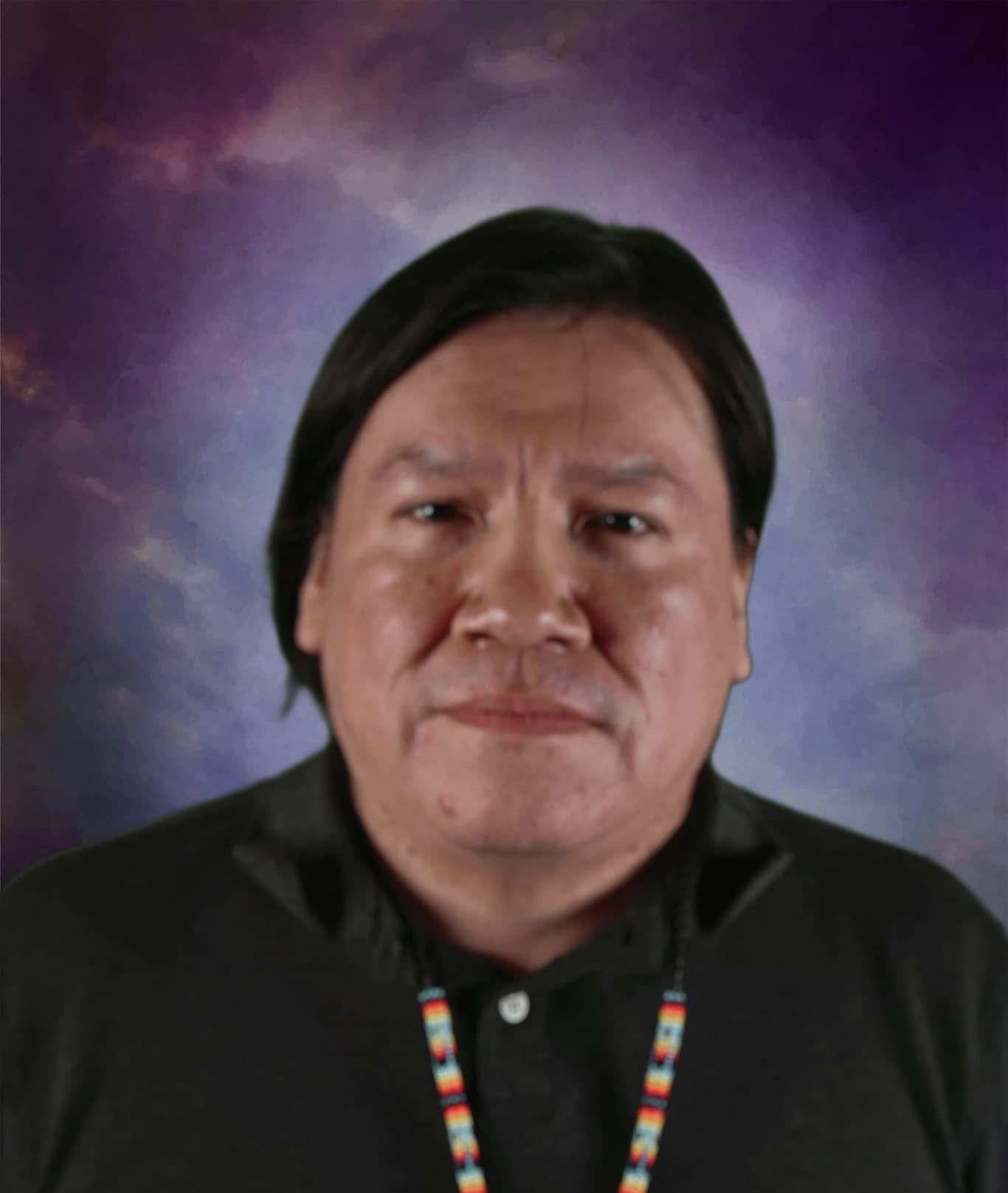Finding my mooshoom’s recordings

Cover: an undated photo of my mooshoom (grandfather) Alfred Carpenter.
My family visited my grandparents a lot when I was growing up in Moosonee. We’d go there on Saturdays for radio bingo or stop by after church on Sundays. Other times, they watched over us or came over for Thanksgiving and Christmas dinners.
Most of my interactions were with my granny, who was the only English speaker of all my grandparents. My mooshoom was always there, sipping tea from his steel cup and grinding his teeth. Since I didn’t know Cree and he didn’t know English, we were never able to have a conversation. Any words exchanged beyond my simple Cree words were done through my granny or parents.
My paternal grandparents Anne and Alfred Carpenter. Photo by Leica Carpenter.
Still, we bonded with mooshoom through non-spoken means. With me, he imitated the shrill calls of the Greater Yellowleg, a small aquatic bird that came by our goose hunting blind on occasion, which I’d shoot to give to my granny. He’d watch for my reaction and when I looked, he’d chuckle and we’d share a laugh.
He passed away in 2003 when I was 19 years old. We never had a conversation.
About 15 years later, I started to read Treaty No. 9 by John Long, a book a chronicling the treaty commissioners’ journey to obtain signatures from the northern Ontario “Indians” in 1905 and 1906. Near the beginning in a section called “Meegwetch,” John Long gives thanks to various people and organizations that helped him produce the book.
“Alfred Carpenter” – that’s my mooshoom’s name. Could that be him? I had never heard of these recordings. My only documentation of him were in photos and perhaps a few clips from old VHS hunting videos.
John Long continued, and in thanking the Ojibway and Cree Culture Centre, he added: “where Alfred’s narrative is on deposit…”.
Excerpt from Treaty No. 9: Making the Agreement to Share the Land in Far Northern Ontario in 1905 by John Long, page xvii
I was living in Toronto at the time, so on my next visit to Timmins, I stopped by the Ojibway and Cree Culture Centre and asked if they had these recordings. I gave my mooshoom’s name and my mailing address and they said they would send me something. A few weeks later, I received a envelop in the mail containing a USB drive. I inserted it into my laptop and it contained two audio files and a Word document. I played the audio and recognized my mooshoom’s voice. He sounded different but I knew that was him.
On my next visit to Moosonee, I played the audio for my late dad and uncles. They confirmed that was him, noting that he sounded “younger.” My mooshoom would have been 62 years old at the time.
While this feels like an incredible discovery where I can listen to his voice – which I thought had been long lost in time – I still cannot understand him. I told myself back then, well, I’ll learn Cree someday and then I’ll be able to understand him. So I sat with these recordings since then with a vague, non-committal promise to myself to learn Cree.
Around that time, I had an idea to do an interview podcast featuring guests from my home region. I enjoyed long-form interview podcasts and found people’s lives interesting – where they came from, their upbringing, the challenges and struggles, and how they got to where they are. I wanted to feature those types of stories from our communities to a wider audience. Too often our communities are under- and misrepresented in the Canadian media and society at large, with stereotypes and tales of crises and tragedies. We have resilience and successes too.
Like with learning Cree, that also sat in the back of my mind for years. And last year, I had the idea: why don’t I combine these two – learning Cree and an interview podcast – into one.
Almost a year later, I launched Apisheesh: A Cree Learning Podcast and I have three episodes out so far with three guests. It’s a longtime coming and it’s a ways to go.
My Cree learning is a work in progress but I’ll get there. As for the recordings, I’m going to wait until I feel comfortable enough before I listen back to them.
When I was having lunch with an Anishinaabe friend who is on her language learning journey, she said she was enthralled by the premise of the podcast. She asked, “who is your mooshoom?” I said, “well, he’s Alfred Carpenter…” She said, “No, like, why was he asked to be recorded? Was he known for that (storytelling)?” I honestly don’t know.
I plan to dedicate a future episode on my mooshoom – who he was and how these recordings came to be. I hope to talk to family members and people who might know the background behind the late John Long’s project.
Stay tuned and meegwetch to everyone who has listened, subscribed and shared the podcast to date
-Lenny
Don't forget to like, share and subscribe to the podcast.



